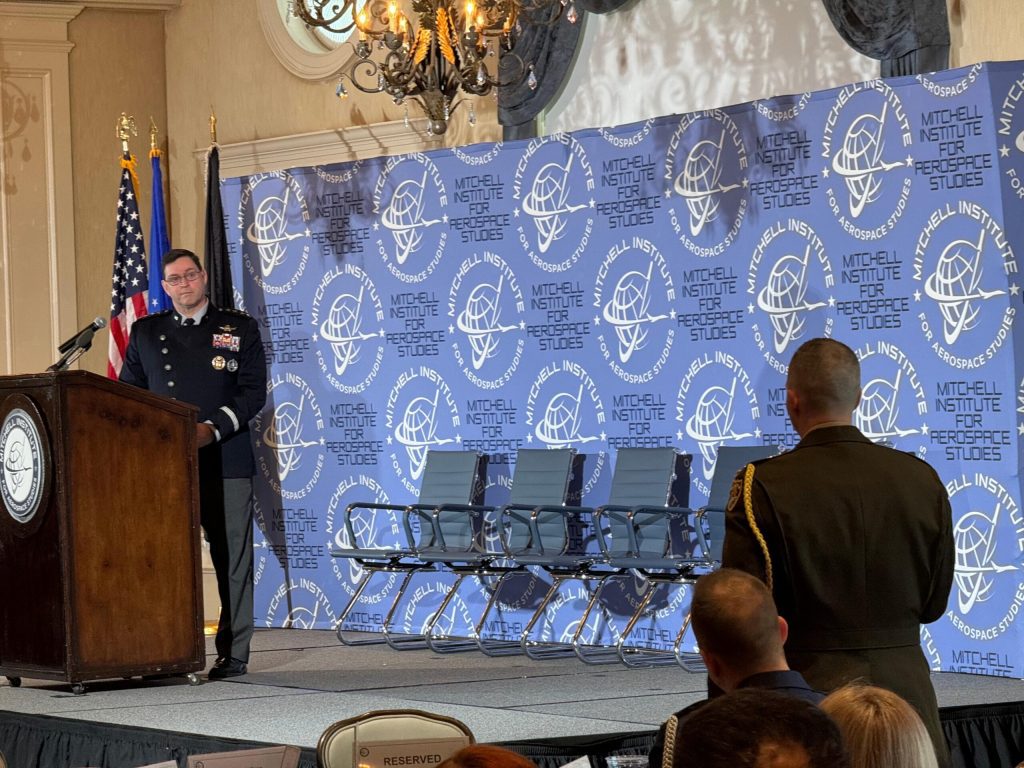ARLINGTON, Va. — Gen. Chance Saltzman, chief of space operations, stated that the U.S. Space Force has strong intelligence regarding the actions of other countries in outer space. However, military leaders always desire more thorough data and analysis about activities in orbit, he mentioned on March 27.
“I don’t often get surprised by things I hear,” Saltzman said at the Mitchell Institute’s Space Security Forum
Awareness of potential threats and the actions of other nations in space is fundamental to all military space activities, he explained. Yet, having additional sensors and analytics tools would further enhance the Space Force’s visibility into technologies being tested by strategic competitors like China and Russia.
“You can never have too much space domain awareness,” Saltzman said. “The demand for intelligence is continuous, it’s ever changing.”
The Space Force uses the term space domain awareness to describe the capability to track and monitor objects in space. This encompasses both friendly and potentially threatening objects such as anti-satellite weapons and debris from collisions or explosions in space.
In comments at the conference, Saltzman emphasized various threats in orbit that target U.S. satellites, particularly China’s development of ground-based lasers to disrupt and degrade satellite sensors, electronic warfare jammers targeting GPS and communications satellites, and anti-satellite missiles.
Saltzman said space domain awareness is not just about taking pictures of objects but also being able to “maintain custody” of objects of interest.
Maintaining custody of a target goes beyond simply knowing where something is in space. It refers to the ability to continuously track and monitor a specific object with a high degree of accuracy and for an extended period.
“This requires a tremendous network of sensors to continue that data flow,” said Saltzman. He noted that the Space Force will continue to invest in sensors that use various phenomenologies — including optical, radar and radio frequency — but also in “tools to pull that data together, contextualize it, so decision makers can make timely, relevant decisions.”
Increased use of commercial data
Saltzman and other officials said space domain awareness is a task shared with allies and also with the private sector. The Space Force increasingly purchases data and services from companies that can provide specialized intelligence about objects orbiting the Earth.
That emerging demand was highlighted in a new report by the market research firm Quilty Space, which said space domain awareness represents a significant business opportunity for companies that build and operate sensors, and for new space companies that use small satellites to monitor outer space.
“DoD spends billions deploying and maintaining space situational awareness (SSA) systems in space and on Earth,” said the Quilty report. Three programs, the SilentBarker satellite system, the Deep Space Advanced Radar Capability (DARC), and the Ground Based Optical Sensor System will collectively cost $2.6 billion from 2021 to 2027.
"In the upcoming years, the Department of Defense, and soon the Office of Space Commerce, are expected to spend tens of millions of dollars purchasing commercial SSA data," the report stated.
Quilty analysts mentioned that defense and intelligence agencies are likely to continue being the main customers of the industry. At the same time, "commercial satellite operators continue to find it difficult to sell SSA data in the market, as they are unwilling to pay for data that is largely available for free from the U.S. government."
The report indicated that the more "disruptive" companies in the sector are creating satellite networks — or hosted payload systems — to observe the space environment. According to Quilty analysts, small-satellite networks in orbit provide more precise data compared to ground-based sensors, and are particularly useful for monitoring hostile or non-cooperative spacecraft and conducting visual inspections of commercial missions for anomalies or health checks.
Quilty Space identifies a potential market for satellites that "focus not on mapping, but instead tracking specific high-interest resident space objects. Such use cases are appealing for the Department of Defense."









